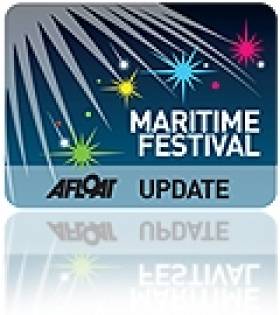Displaying items by tag: RNLI Prawn Push
Arrive By Sea!...to the Dublin Bay Prawn Festival
#FestivalExcursion-Those heading for the Dublin Bay Prawn Maritime Festival (26-28 April) in Howth may consider an alternative and new way of reaching the north Co. Dublin fishing harbour with Dublin Bay Cruises which began operations last week, writes Jehan Ashmore.
The excursions run between Dun Laoghaire (East Pier) and Howth and are offered as a one-way trip (in either direction) between the harbours.
Passengers will be able to make their way back to the city-centre from either Dun Laoghaire or Howth harbours by taking the DART train (concessionary price) or use of other public transport links.
For the festival, Dublin Bay Cruises are also providing special 'Prawn Festival Cruises' on Saturday (27 April) with cruises departing Howth Harbour (at 13.30 and 15.30). These cruises will head out around Howth Peninsula and into Dublin Bay before returning back to the harbour.
All the excursions are operated by 'St. Bridget', a 26m steel-hulled vessel with a capacity for around 100 passengers and which has a bar facility serving light refreshments.
In addition there are shorter trips from Howth Harbour to Ireland's Eye and 'round' the island excursions which are operated by Ireland's Eye Ferries and Island Ferries.
Also taking place on the Saturday, as previously reported on Afloat.ie, there is to be a Prawn Push in aid of Howth RNLI beginning at 3pm.























